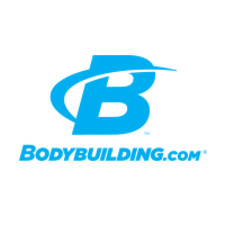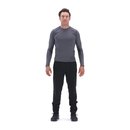Q. I can't even pronounce the word 'plyometrics,' let alone understand why someone would do them. What's all the fuss about?
You don't have to be a former college athlete to do plyometrics. Just because it involves a lot of athletic movement doesn't mean you can't train your body to be more nimble. Plyometrics, or "plyos," are a type of exercise that encourages muscle development, speed agility, endurance and quickness. If you're interested in doing a plyos workout, prepare to do some jumping!
Plyo Your Belly Off!
Plyometric exercises stimulate several different muscle groups at the same time. Although plyos are generally used to improve athletic performance, they can also be used to improve fat loss, strength and endurance. Plyometric exercises are great for challenging your fast-twitch muscle fibers, coordination and agility. All these things work together to help transform fat into lean muscle while elevating your heart rate and igniting a caloric burn!
These exercises are very high impact, so proceed with caution if you decide to implement them into your training regimen. There's a lot of jumping involved, and it's relatively easy to twist an ankle, sprain a knee, or herniate a bulging disk.
Introducing plyometrics into your cardio routine can spice up your workout. Plyometric training challenges your muscles, nerves, and tendons because you need explosive power to perform the repetitions. You'll burn twice as many calories and have way more fun than plodding away on a treadmill or stair-master.
Personal Plyo Training
I implement plyometrics into my training routine every week and it helps me stay lean and explosive and gives me great endurance. I also put my clients on these routines and it helps them achieve their fat-loss goals.
Try this plyo workout three times per week for added athletic prowess and fat burn!

BodyFit
$6.99/month- 2,500+ expert-created single workouts
- 3,500+ how-to exercise videos
- Detailed workout instruction
- Step-by-step workout tips
- Training at gym or at home
- Access to Workout Plans
- Access to Bodyfit App
- Store Discounts
Already have a Bodybuilding.com account with BodyFit? Sign In

What comes with BodyFit?

- Instructional Videos
Don't risk doing a workout improperly! Avoid injury and keep your form in check with in-depth instructional videos.

- How-to Images
View our enormous library of workout photos and see exactly how each exercise should be done before you give it a shot.

- Step-by-Step Instructions
Quickly read through our step-by-step directions to ensure you're doing each workout correctly the first time, every time.
BCAAs And Plyos On A Higher Level
You will get more out of your plyometric workout if you take BCAA's before you do you train. A study at Northumbria University found that subjects that used a BCAA supplement before and after a plyometric-based exertion test were significantly less sore than those who didn't take the supplement. In addition, the BCAA group regained maximal muscle power significantly faster than the non- BCAA group.
Read Before You Plyo
- Before you attempt any plyometric workout, make sure you warm up properly and stretch for at least 15-20 minutes.
- Perform plyos on a soft surface like grass, carpet, or rubber mats.
- If you feel pain, stop.
- If you're a beginner, start your plyo training by doing the movements slowly. You can build speed once you've gotten the hang of them.
- Take at least a day or two of rest between plyometric workouts. Your body will need some good recovery time before it can do another plyo training session.




